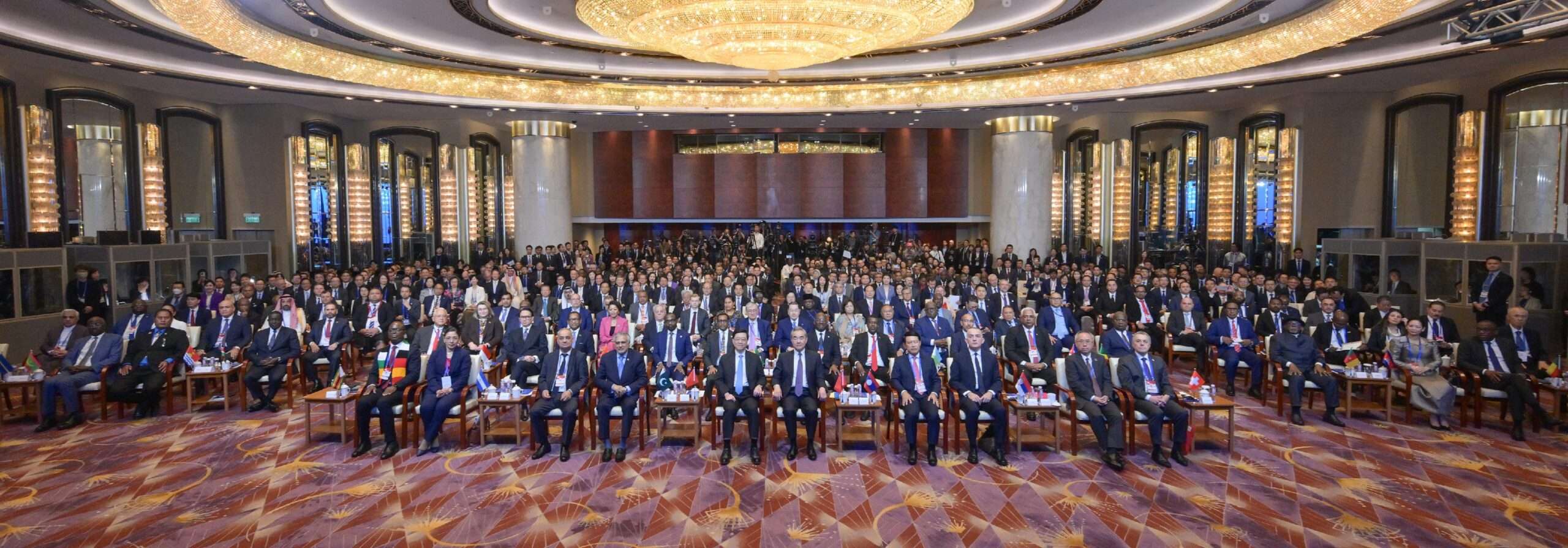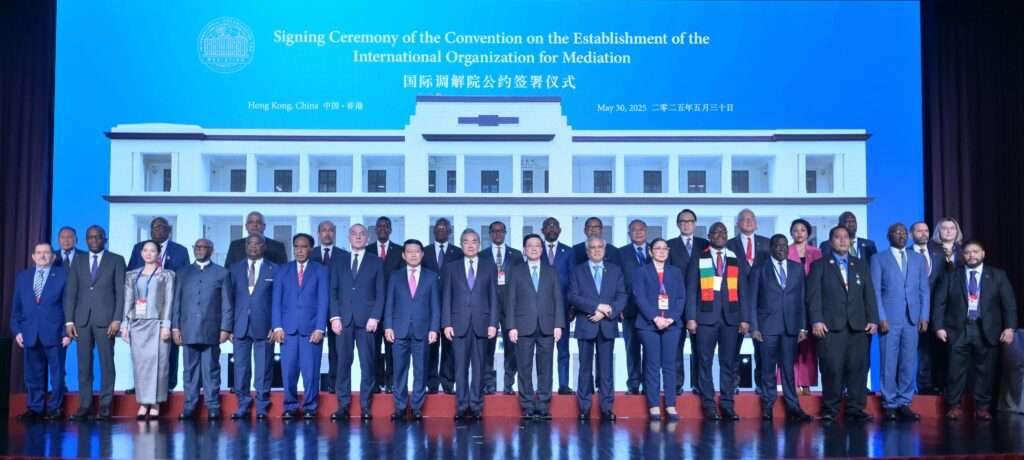At the glittering halls of Hong Kong’s West Kowloon Cultural District, dozens of foreign dignitaries gathered on May 30, 2025, to witness the signing of something that could quietly re-calibrate global diplomacy: the Convention on the Establishment of the International Organisation for Mediation (IOMed). Framed as a peaceful alternative to legacy institutions of the West particularly the International Court of Justice. China’s creation of IOMed is far more than a legal experiment. It is a vehicle for a new diplomatic order, one that places Beijing not just at the center of global economic gravity but now, increasingly, at the helm of international dispute resolution.
Beyond the legal formalities, the launch also served as the stage for something more potent: a quiet thaw between Afghanistan and Pakistan, brokered not in Geneva or Washington, but under China’s mediation canopy. This was no coincidence. It followed a closed-door trilateral summit in Beijing, where Chinese officials steered what insiders are calling a “stability-first compact” between Islamabad and Kabul. China, in this case, is not simply providing the table it is setting the menu.
The signing ceremony drew representation from nearly 40 countries and international institutions. Among the attendees were Indonesia, Pakistan, Laos, Cambodia, Belarus, Cuba, and Serbia, all the nations often viewed as diplomatically aligned or economically interlinked with China. Also present were delegates from 20 international bodies, including key representatives from the United Nations, lending IOMed not just political theatre but multilateral legitimacy.
From Mediation to Movement: A Quiet Thaw on the Ground
While headlines focused on grand diplomatic gestures, subtle yet significant shifts were already taking place along the Afghan–Pakistani border. In late May, transport trucks resumed crossing at the Torkham and Chaman checkpoints after months of near-total disruption caused by bureaucratic entanglements and political distrust. The renewed flow of trade is being described on both sides as “confidence-building traffic” a cautious but clear trial run toward more formalized economic integration.
In parallel, changes are quietly unfolding in Afghanistan’s southeastern provinces. Reports indicate that Taliban commanders have been instructed to scale back support for the Tehrik-i-Taliban Pakistan (TTP), long a thorn in Islamabad’s security calculus. If sustained, this shift would mark a notable change in Taliban behavior, seemingly tied to Beijing’s promise of economic inclusion and regional legitimacy.
Meanwhile, China is already laying technical groundwork for what comes next. Engineers affiliated with the Belt and Road Initiative have been spotted conducting early-phase feasibility studies for extending key corridors of the China–Pakistan Economic Corridor (CPEC) into Afghan territory. Though no formal announcements have been made, sources within both the Pakistani and Chinese ministries confirm that proposals are in place for logistics nodes in Helmand and Kandahar, and possibly a new rail artery mirroring the Gwadar–Khunjerab axis.
Conclusion
The convergence of Afghanistan and Pakistan under China’s mediation umbrella is no accident of circumstance it is the calibrated product of diplomatic engineering. With IOMed as its institutional chassis and trilateral summits as its engine, Beijing is prototyping a new regional architecture, one that replaces military alliances with economic interdependence, and sanctions with soft dependency.
For Afghanistan, still diplomatically isolated, the prospect of informal legitimacy and regional connectivity is invaluable. For Pakistan, the opportunity to stabilize its western frontier while securing Chinese-backed economic lifelines comes at a critical domestic moment. And for China, every mediated handshake and feasibility survey marks a quiet expansion of influence, bypassing confrontation and embedding long-term presence.

